nn
n
n Using jewels as a means of conveying covert messagesnwas but one way of sending secret signals employed by our forbears. In theneighteenth and nineteenth centuries, a secret language developed that made usenof a ubiquitous fashion accessory – the fan.
n
n
n
 |
| An Autograph Fan |
n
n
n
nFans were used for far more thannsimply keeping cool or swatting away the odd flying insect; there were mourningnfans, fortune telling fans, autograph fans, riddle fans, political fans,nprogramme fans and many, many more.
n
n
n
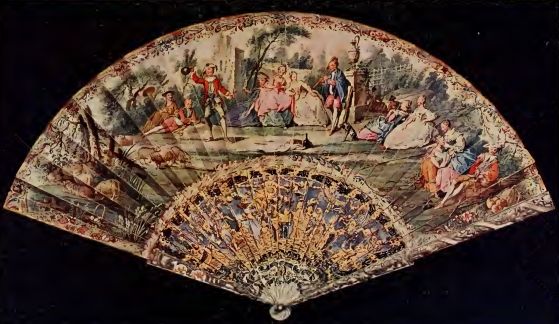 |
| French Fan c.1750 |
n
n
n
nOpera and theatre fans may have been decoratednwith bars of music, lyrics or scenes from a play. Game fans bore the rules of angame, with a coloured border of playing cards. Fans were produced to celebratenroyal births or marriages. Fans featuring portraits of favourite preachers, andnverses and illustrations from the Bible enlivened Church services.
n
n
n
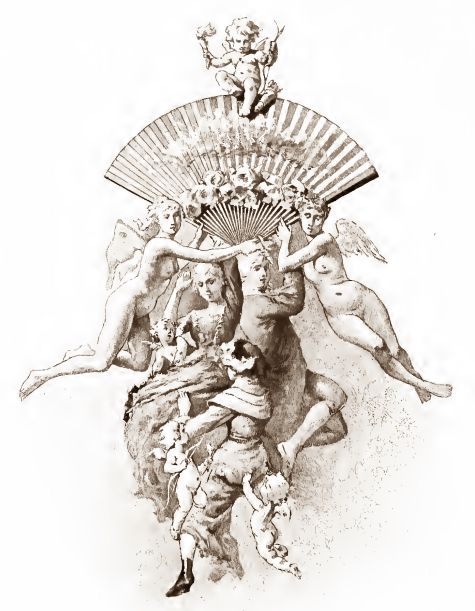 |
| Heavenly Fans |
n
n
n
nThere werenfans of starched lace, feathered fans, silk and taffeta fans, jewelled fans,nkid leather fans, painted fans and printed fans, gold and silver fans, plainnfans, fancy fans, paper fans, folding fans, fluttering fans; in short, fans ofnevery sort, for every occasion, were everywhere.
n
n
n
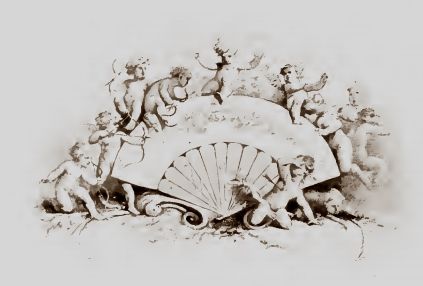 |
| Cherubs and Fan |
n
n
n
nThe fan could be used simplynas a means of showing support for a cause, faction or party, just through thencolours or an illustration, rather like those used today to display one’snsupport for a sports team or popular band, but there was another way thatndepended on how the fan was held and used.
n
n
n
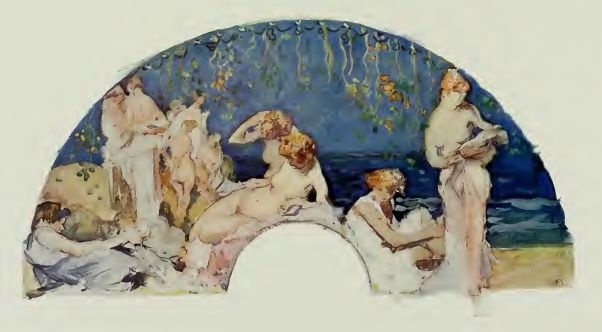 |
| Frank Brangwyn – The Blue Fan – Silk |
n
n
n
nAt its simplest, this could bensomething as obvious as holding a closed fan to the right cheek, conveyingnassent or ‘Yes’, and the reverse message, ‘No’ was sent bynholding the closed fan to the left cheek.
n
n
n
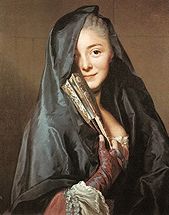 |
| This Lady says Yes |
n
n
n
nJoseph Addison, writing in ThenSpectator of June 27th 1711, says,
n
n
n
n“Women are armed with Fansnas men with Swords—and sometimes do more execution with them . . . There is anninfinite variety of motions to be made use of in the flutter of a Fan. There isnthe angry Flutter, the modest Flutter, the timorous Flutter, the confusednFlutter, the merry Flutter, and the amorous Flutter … I need not add that a Fannis either a Prude or Coquette according to the nature of the person who bearsnit!”n
n
n
n
n
 |
| Joseph Addison |
n
n
n
nAs may be expected, this language quickly grew, with specific gesturesnused to send specific messages. A closed fan placed near the heart meant, ‘Younhave won my love’, a closed fan resting on the right eye meant, ‘Whennmay I see you?’, the number of sticks folded out from the fan indicated thenhour. Drawing a fan across the cheek said, ‘I love you’, drawing anclosed fan through the hand said, ‘I hate you’. Clasping the handsnbeneath an open fan, ‘Please forgive me’; covering the left ear with annopen fan, ‘Do not betray our secret.’
n
n
n
 |
| The Ubiquitous Fan |
n
n
n
nClosing the fan whilst fanningnoneself slowly meant, ‘I am married’, doing the same whilst fanningnoneself quickly meant, ‘I am engaged’, closing the fan quickly andnimpetuously meant, ‘I am impatient’, slowly and deliberately closing anfully opened fan meant, ‘I promise to marry you’. Dropping the fan, ‘Inbelong to you’, pressing a half-opened fan to the lips, ‘You may kiss me’,npressing a fully-opened fan to the lips, ‘I don’t trust you’, twirlingnthe fan in the right hand, ‘I love another’, twirling the fan in thenleft hand, ‘We are being watched’.
n
n
n
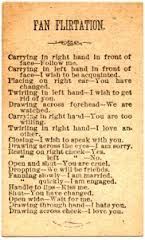 |
| Fan Flirtation |
n
n
n
nThe famous Parisian fan-maker, MaisonnDuvelleroy, even went so far as to present the purchasers of their new fans withna little printed card that gave a brief outline of the code. Which, of course,nmeant that everyone who bought a fan was in on the secret, and as Duvelleroy’snsold hundreds of thousands of fans, so hundreds of thousands of people made thensecret code something less than secret. It was a gimmick, a selling point, andnbuyers love to believe that they are members of a small group of cognoscenti,nbelonging to an elite, select minority.
n
n
n
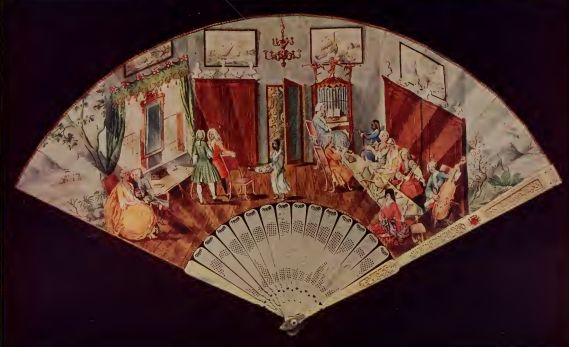 |
| Dutch Theatre Fan c.1730 |
n
n
n
nNow if the whole of Europe is busynfluttering its fans, flapping and twirling and dropping the things across thencontinent, there will be occasions when a message got through, under the radar,nso to speak, of an inattentive chaperon, but all in all, it was a bit of funnand not really meant to be taken seriously. It was not unlike modern B1ff orn1337-speak (again, LEET derives from ‘elite’, also a manifestation of ansecret coding in-crowd), which can be impenetrable to teh n00bs, but is plainnwhen U R pwnage & AYB.
n
n
n
 |
| AYBABTU |
n
n
n
nThere were other fan-messaging languages that werenused, the simplest of which had the letters of the alphabet printed onto thenfolds of the fan and all that needed to be done was to spell out words byndisplaying the individual letters, something which is, again, hardly secretnwhen flashed across a crowded salon. It also implies a remarkably high level ofneyesight in the gentlemen of old.
n
n
n
 |
| The Parts of a Fan |
n
n
n
nA more contrived method is more akin tonsemaphore signalling, as the alphabet is split into five groups of five lettersn(‘J’ was omitted), with five movements within each of the five subdivisions –nABCDE FGHIK LMNOP QRSTU VWXYZ. These five movements were: 1 with the left handnto the right arm, 2 with the right hand to the left arm, 3 to the bosom, 4 tonthe lips and 5 to the forehead. Let’s say you wanted to send the word DEAR, sonto begin, the fan is moved onto the right arm, signifying the first group ofnfive letters (ABCDE), and then to the lips, signifying the fourth letter withinnthat group.
n
n
n
 |
| Try doing this with a fan … |
n
n
n
nTo make ‘E’, the fan is move back to the right arm, then to thenforehead, signifying the fifth letter in the first group. ‘A’ is next, again innthe first group, so it’s onto the right arm again, and the gesture is repeatednto indicate the first letter of the group. Finally, ‘R’ is made by signallingnthe fourth group of letters, so the lips are touched with the fan, and thennmoving the fan onto the left arm indicates the second letter of that group.nWhen the whole word has been spelled out, the fan is opened fully, to signalnthat the word has been completed.
n
n
n
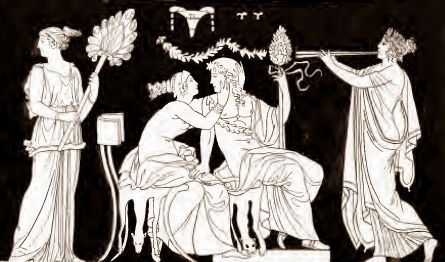 |
| Ancient Greek Fan |
n
n
n
nPersonally, I’d say a little written note, passednsurreptitiously from hand to hand, would be far less bother than all thisnrigmarole, and far less open to misinterpretation, but then again, that lacksnthe underlying frisson of the forbidden.
nnn
n
n
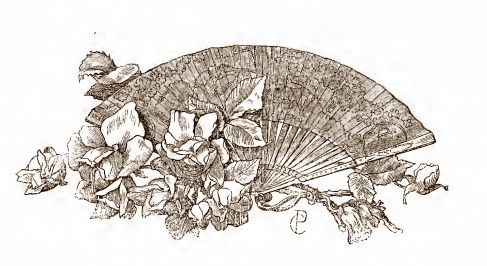 |
n
n
nnn
n


















